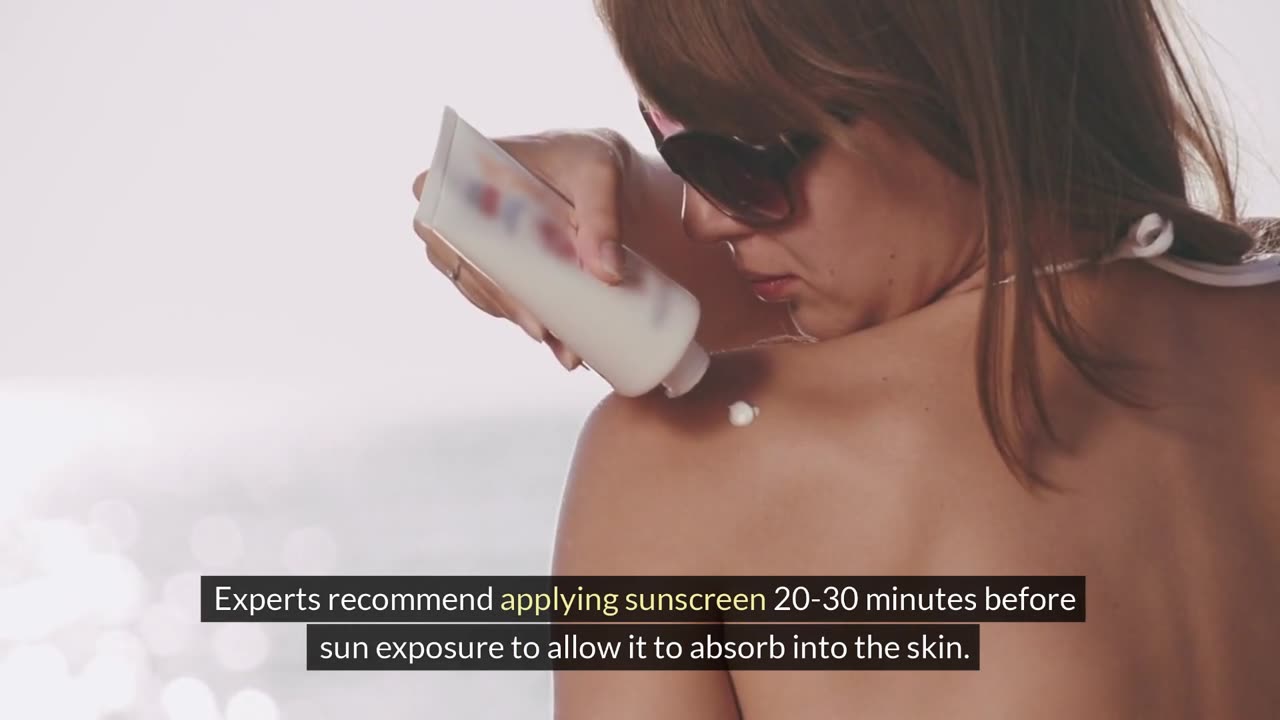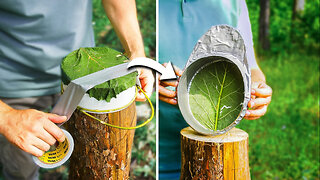Premium Only Content

sunscreen :do you protect your skin properly ?
# Sunscreen: Are You Using It Correctly?
Sunscreen is often touted as one of the most effective ways to protect our skin from the harmful effects of the sun. Despite the warnings and the rising cases of skin cancer, many people are still confused about how to properly use sunscreen. Let's delve into the science of sun protection and ensure you're getting the maximum benefits from your sunscreen.
## The Importance of Sun Protection
### The Hidden Dangers of UV Radiation
When we're exposed to the sun, ultraviolet (UV) radiation damages the DNA, proteins, and other molecules in our skin cells. This damage can lead to premature aging and an increased risk of skin cancer. Richard Gallo, a professor of medicine at the University of California, explains that while moderate UV exposure helps generate vitamin D, excessive exposure overwhelms the skin's protective mechanisms, leading to sunburn and potential DNA damage.
### The Rising Cases of Skin Cancer
More than 80% of melanoma skin cancer cases are caused by sunburn, with an estimated 1.5 million new cases of skin cancer globally each year. This figure is expected to rise by 50% by 2040. Despite these stark statistics, many people underestimate the importance of proper sun protection.
## Understanding Sunscreen: What is SPF?
### Decoding SPF Numbers
SPF stands for "sun protection factor," indicating how much UV radiation is required to cause sunburn on protected skin compared to unprotected skin. A higher SPF means greater protection. However, SPF mainly measures UVB protection, while UVA protection is indicated separately, often on the product label.
### The Best Times to Apply Sunscreen
The sun's rays are strongest between 10 a.m. and 4 p.m., making it crucial to apply sunscreen during these hours. Experts recommend applying sunscreen 20-30 minutes before sun exposure to allow it to absorb into the skin. For maximum effectiveness, it's also advisable to apply sunscreen twice, as studies show that people tend to underapply it.
## Applying Sunscreen Correctly
### Techniques for Effective Application
A 2018 study found that some UV protection begins immediately after applying sunscreen, but it takes about 10 minutes to become stable. Scientists suggest reapplying sunscreen after sweating, swimming, or rubbing against clothing or sand to maintain protection.
### Avoiding Common Mistakes
Avoid mixing sunscreen with other skin products like moisturizers, as this can reduce effectiveness. Richard Blackburn, a professor at the University of Leeds, advises against mixing different brands of sunscreen due to potential ingredient incompatibilities. It's also important to check the expiration date and store sunscreen in a cool, dry place.
## Sunscreen Varieties: Navigating the Options
### Differences Between Sunscreens in the US and the UK
In the US, sunscreens are regulated as non-prescription drugs, requiring extensive testing for new ingredients. In the EU, sunscreens are regulated as cosmetics, allowing for quicker approval of new UV filters. This means some US sunscreens may not meet the higher UVA protection standards of the EU.
### Choosing the Right Sunscreen
Look for a high-SPF sunscreen labeled "broad spectrum" to ensure protection against both UVA and UVB rays. In the US and Japan, the PA system (Protection Grade) is used, with the highest level of protection indicated by PA++++. In the UK and Europe, the UVA star rating system is common, with five stars indicating the highest level of protection.
## Addressing Common Concerns
### Vitamin D and Sunscreen
There have been concerns that wearing sunscreen might block vitamin D absorption. However, a review of studies suggests that the risk is low. The benefits of protecting skin from harmful UV radiation outweigh the potential reduction in vitamin D production.
### Sunscreen Safety: Debunking Myths
Some people worry about the potential toxins in sunscreens. The evidence indicates that approved sunscreens in the UK, EU, and US are safe and effective. The biggest concern is allergic reactions to specific ingredients. As Richard Gallo emphasizes, the toxic effects of solar radiation far outweigh any potential risks from sunscreen ingredients.
### How Much Sunscreen to Use
The FDA recommends applying 2 mg/cm² of sunscreen to the skin, equivalent to roughly six teaspoons for the face and body of an average-sized adult. Studies show that people often apply less than needed, reducing effectiveness. For young children, specific amounts vary by age, but generally, it's important to reapply every two hours and use physical barriers like clothing for additional protection.
## Final Tips for Sun Safety
### Sunscreen vs. Sunblock
Sunscreen absorbs UV rays, acting as a chemical barrier, while sunblock creates a physical barrier that reflects UV rays. Both are effective, but it's important to choose a product that suits your skin type and activity level.
### Practical Advice for Daily Use
Use sunscreen daily from April to September, even on cloudy days, as UV rays can penetrate through clouds. Cover exposed skin, wear protective clothing, and seek shade during peak sun hours. Regularly check your skin for any changes and consult a dermatologist for any concerns.
---
Thank you for reading! If you found this article helpful, please like, comment, share, and subscribe to our channel for more tips on health and wellness. Stay safe and protect your skin!
-
 LIVE
LIVE
Game On!
12 hours agoTampa Bay Welcomes Jon Gruden BACK!
872 watching -
 20:40
20:40
Degenerate Jay
21 hours agoWhy So Many Hate The Fable Game Series
8.83K -
 5:19
5:19
Kirill MultitoolOfficial
19 hours agoUSEFUL Survival SKILLS and SMART camping LifeHACKS in the wilderness!
4.71K3 -
 38:57
38:57
PMG
20 hours agoHannah Faulkner and Brandon Tatum | BREAKING THE CHAINS: Exposing the Left’s Manipulation
5.55K -
 0:50
0:50
Sean Unpaved
15 hours ago $9.18 earnedWelcome “Unpaved w/ Sean Salisbury” to Rumble
59.4K14 -
 2:10:09
2:10:09
FreshandFit
8 hours agoKicking Out Old Annoying Hoes In Las Vegas!
75.3K114 -
 25:53
25:53
Stephen Gardner
11 hours ago🔥BREAKING: Trump HATING LAWYER busted in $17 million money laundering scheme!
56K133 -
 20:10
20:10
CartierFamily
18 hours agoAndrew Schulz DESTROYS Charlamagne’s WOKE Meltdown on DOGE & Elon Musk!
127K102 -
 33:56
33:56
The Why Files
9 days agoLegend of the 13 Crystal Skulls | From Mars to the Maya
94.1K43 -
 2:56:14
2:56:14
TimcastIRL
11 hours agoEPSTEIN Files DROP, FBI GOES ROGUE, AG Says They COVERED UP Epstein Case w/Amber Duke | Timcast IRL
221K134